The Catholic Monarchs in gratitude for the victory at the battle of Toro in 1476, battle which resolved the succession to the throne in favor of Princess Isabel, ordered the construction of the Monastery of “San Juan de los Reyes” in Toledo, Spain. In 1477 the architect Juan Guas began the works and ten years later, the main chapel, the main nave of the church and the vaults were completed. Its style is Gothic, the so-called “Hispanic-Flemish” or the reign of the Catholic Monarchs.
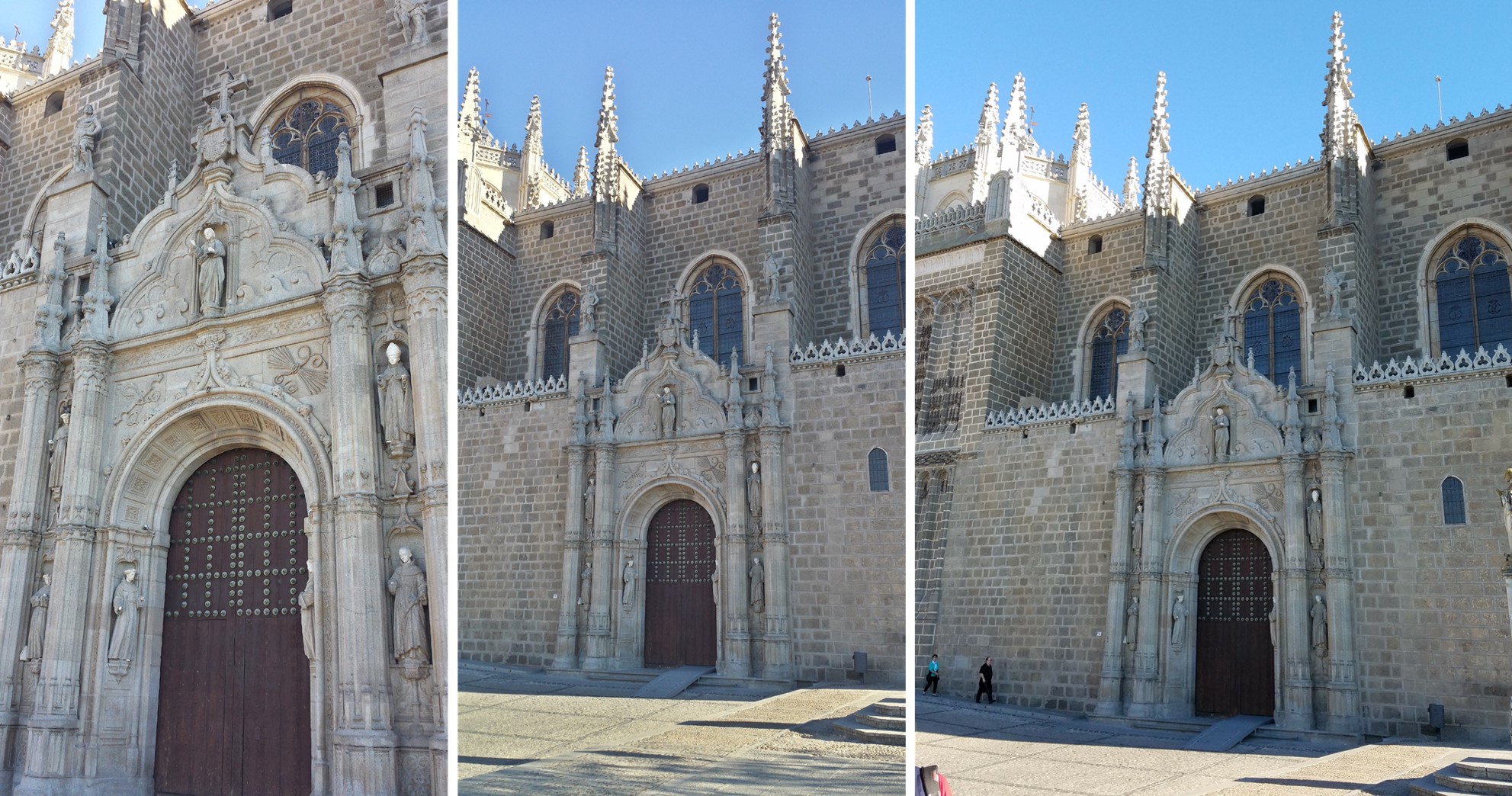
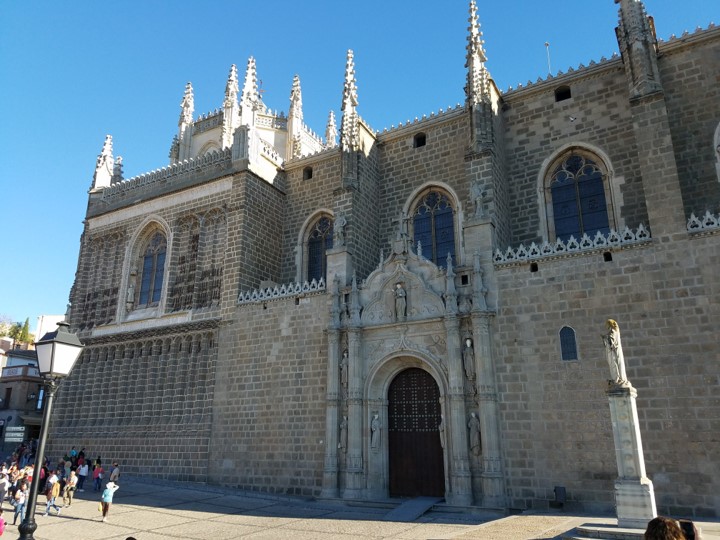
On the facade of the Monastery of “San Juan de los Reyes”, the symbolism of royal power is reinforced through the statues of heralds.
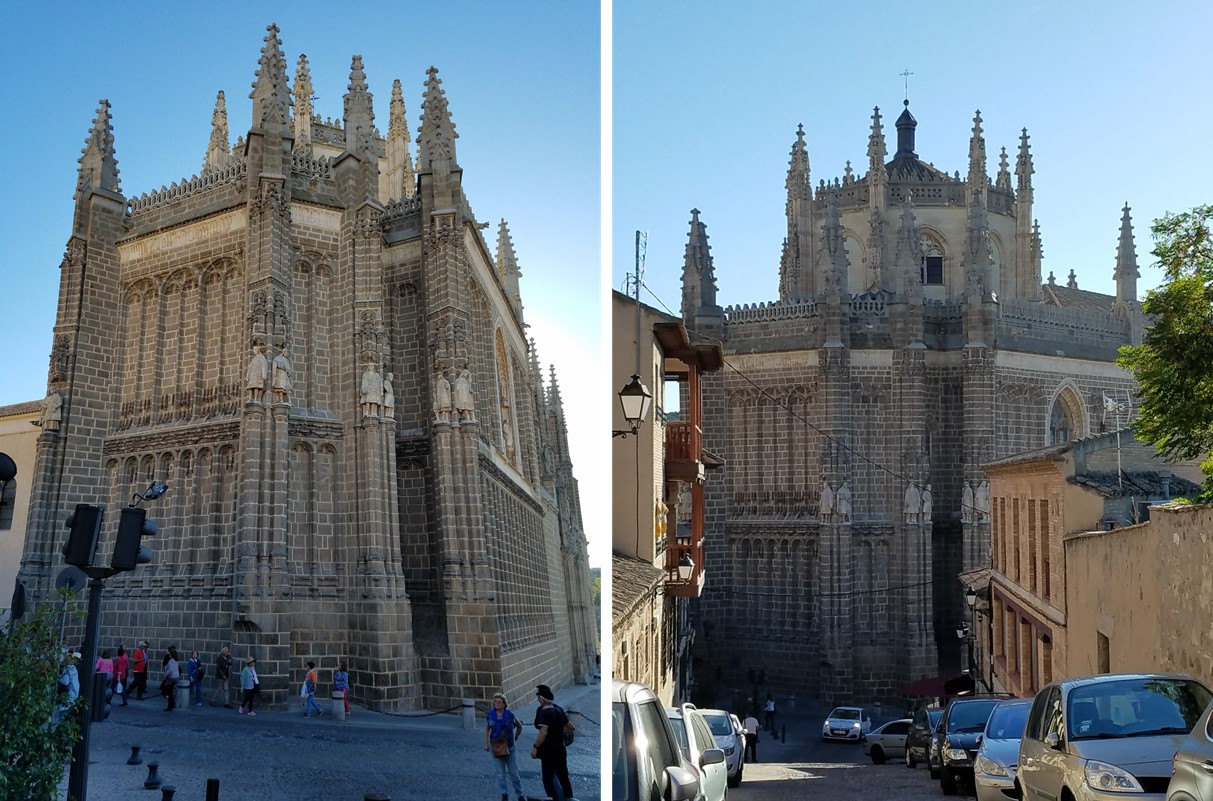
In total there are twelve, six are observed here. The heralds were in charge of preceding the monarchs in their appearances in public and presenting their messages in the courts of other kingdoms. Originally it was intended that this Monastery were to house the remains of the monarchs upon their deaths. Eventually the honor was bestowed to Granada with the construction of the Royal Chapel.
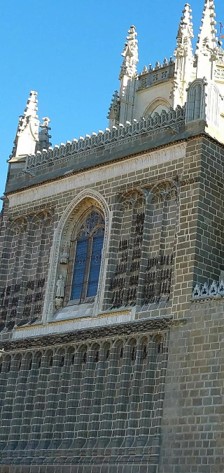
The chains and shackles of the liberated Christian prisoners are found hanging from the exterior walls. The queen ordered they be so exhibited here in 1494.
The Cloister
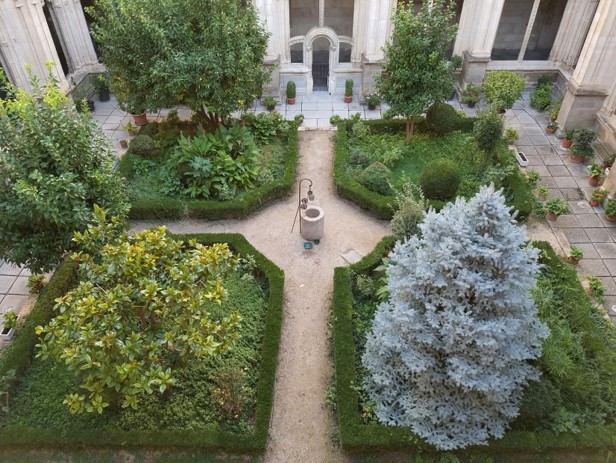
In the Cloister of the Monastery of “San Juan de los Reyes” in Toledo, Spain, we can find a garden with pomegranates, myrtles, cypress, orange, and other species. With a square layout, the courtyard of the cloister usually has a place in the center where four paths cross. In this case, in the center is the water well.
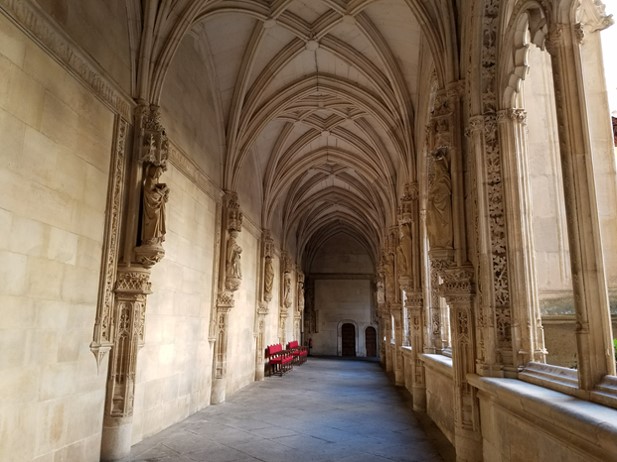
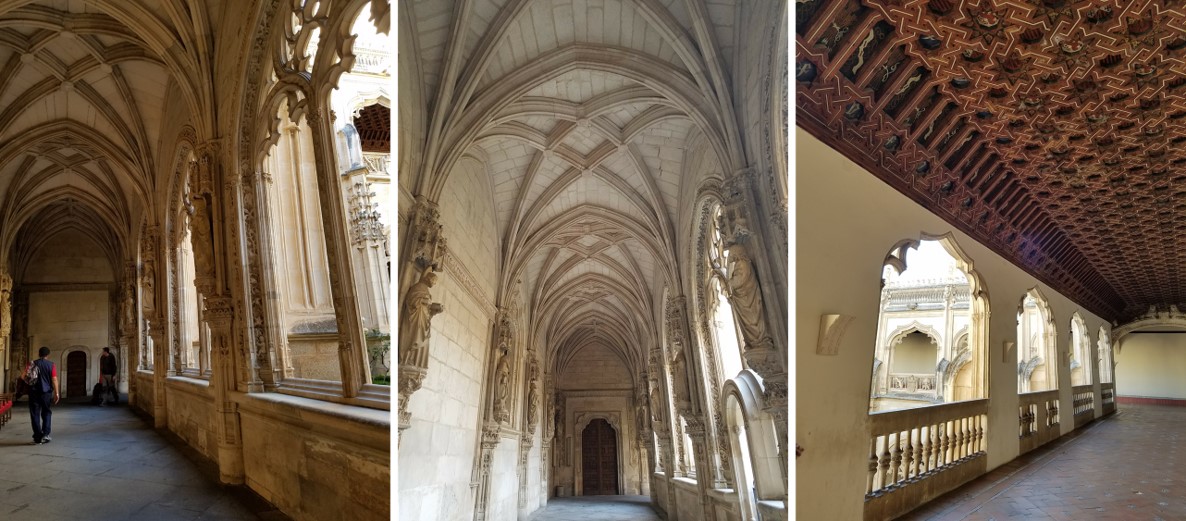
The windows that open to the cloister allow the flow of a very unique lighting to the enclosure. One can also observe the beautifully carved stone, as if it were filigree and can find the works of the sculptor Cecilio Béjar of Toledo, who also worked until 1967 on the restoration of the images of the saints that are found in the lower cloister. Among the sculptures made by Béjar are dragons, apes and exotic birds. The gargoyles found have the function of relieving the water collected from the roof, serving as a drain.
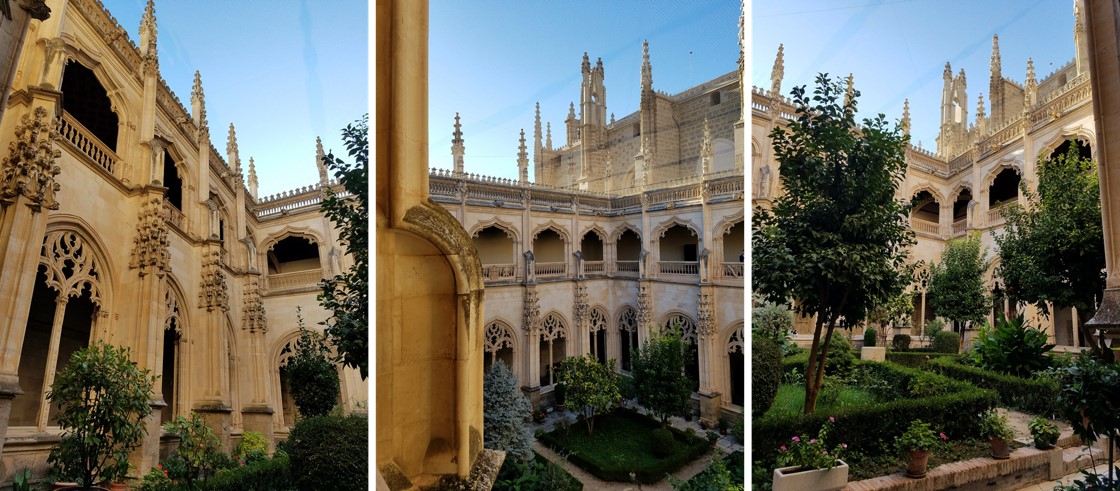
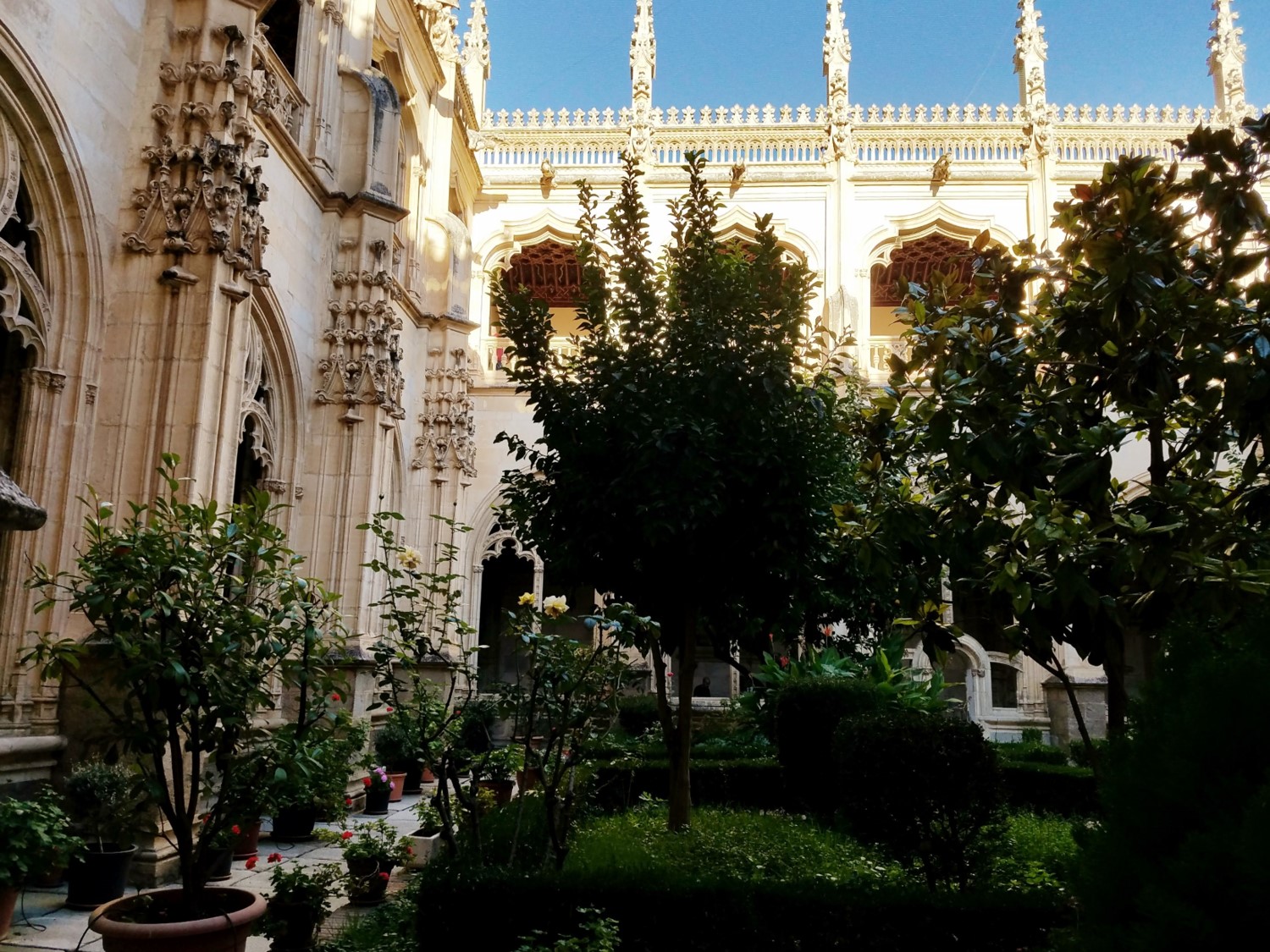
On the central windows that face the courtyard, we find eagles holding royal shields between yokes and beams of arrows. Cresting is used, that is, fretwork found in the upper part of a building or a roof.
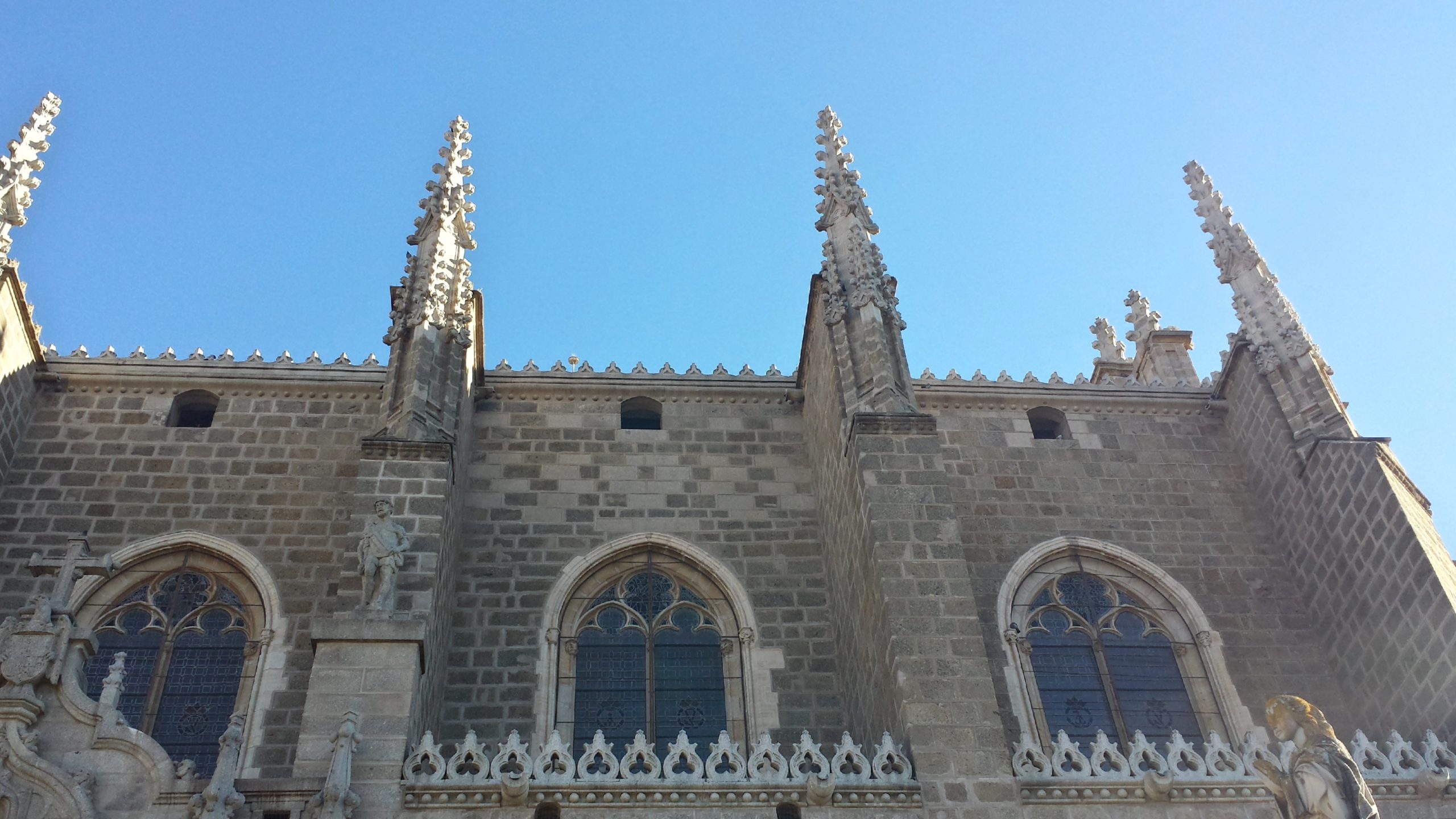
The fretwork borders the roof tiles and hides it with the use of pinnacles or needles which provide for greater height of the structure from the cloister.
The Monastery Church
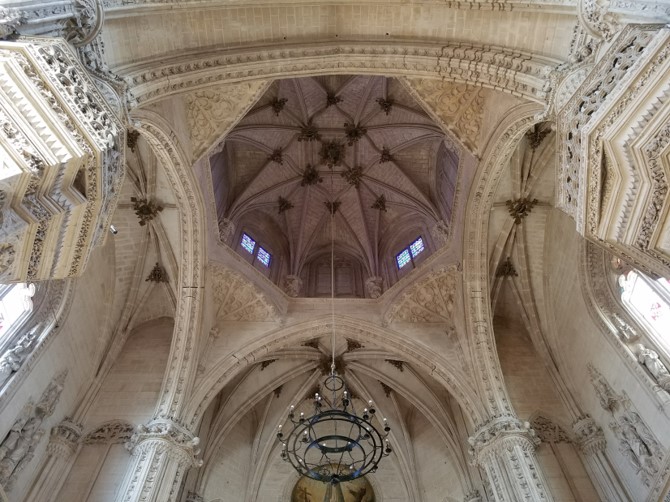
The church of the Monastery of “San Juan de los Reyes” in Toledo, has a single nave covered with ribbed vaults, starry dome over the presbytery, high choir and side chapels between the buttresses. The abundant decoration that adorns the cruise and the main chapel stands out. As for the altarpiece of the presbytery, the original one disappeared during the Napoleonic war.
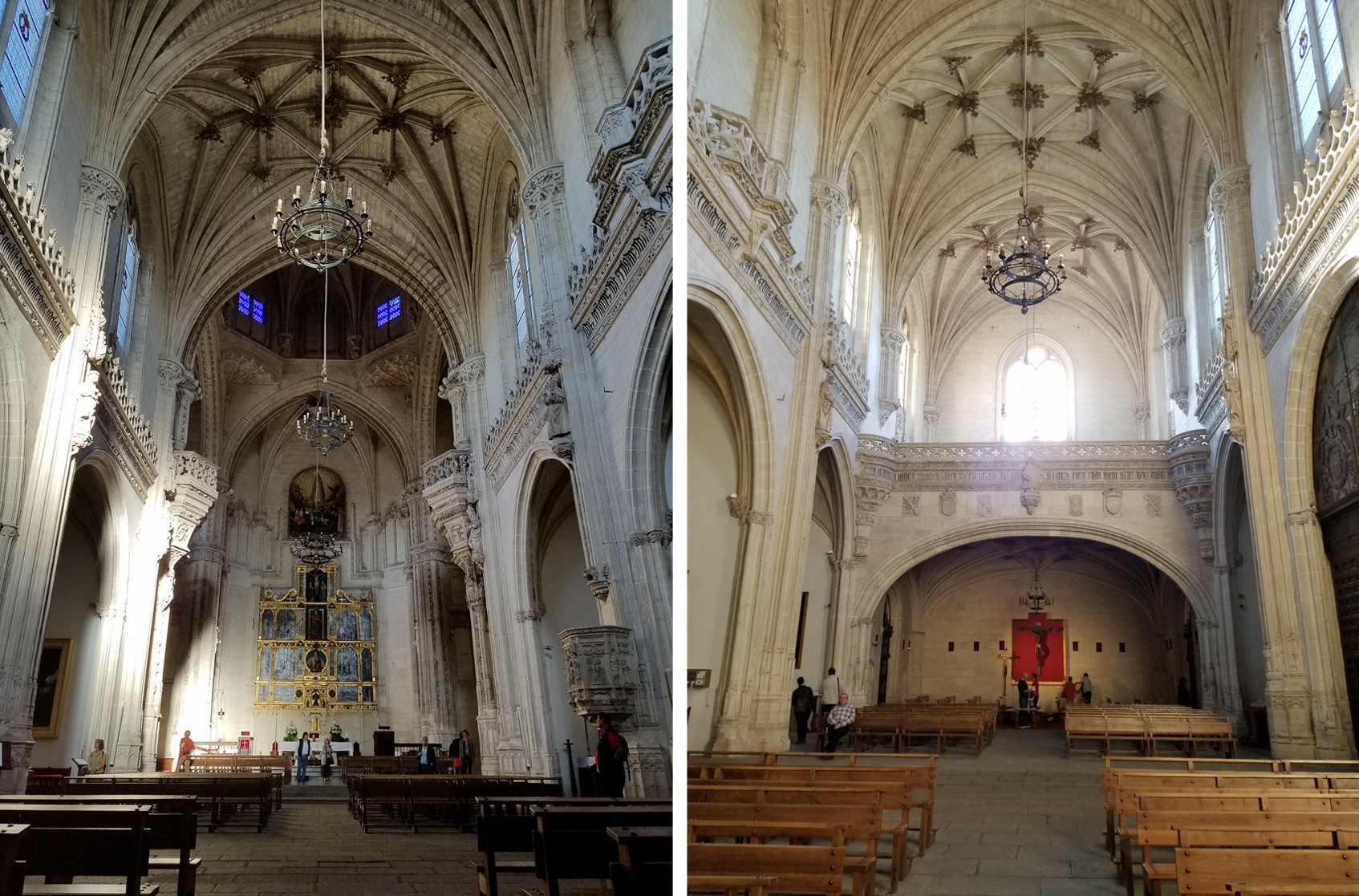
The current one from the last century comes from the “Santa Cruz” Hospital of Toledo, founded by Don Pedro González de Mendoza, Cardinal of the Holy Cross of Jerusalem. That is why the weapons of Cardinal Mendoza, founder of the Hospital, are showcased in the altarpiece. Its author is Francisco de Comontes, carver and painter. In the altarpiece one observe the scenes of: Jesus on the way to Calvary, The Descent and Santa Elena with the miracles of the Cross.
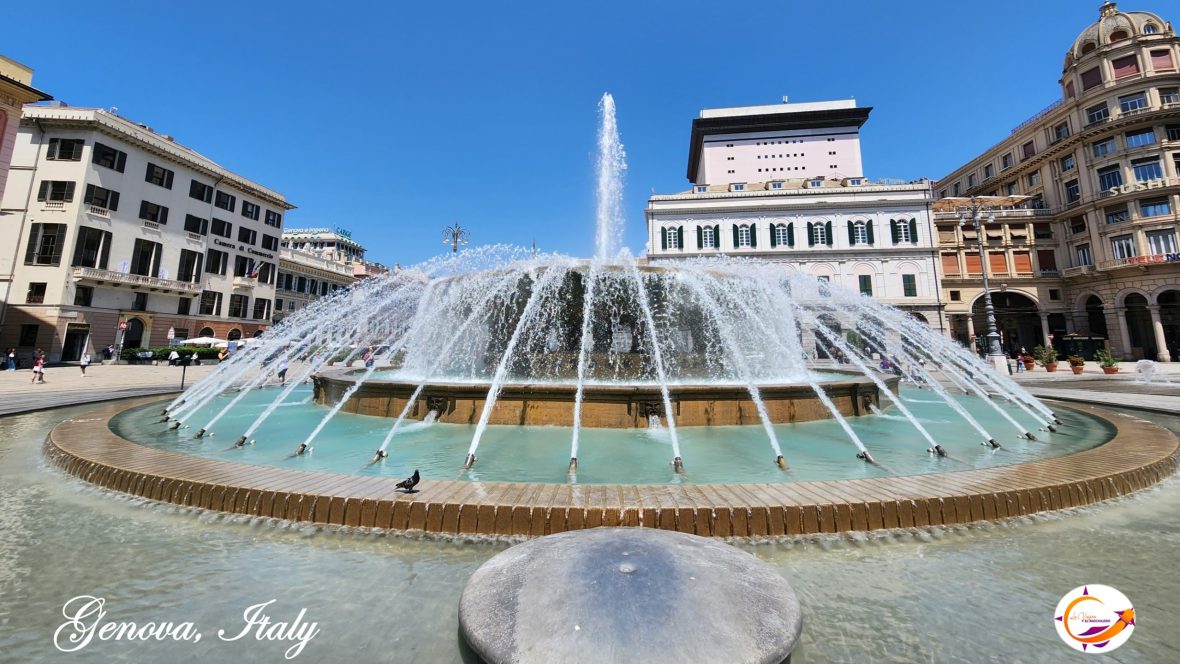
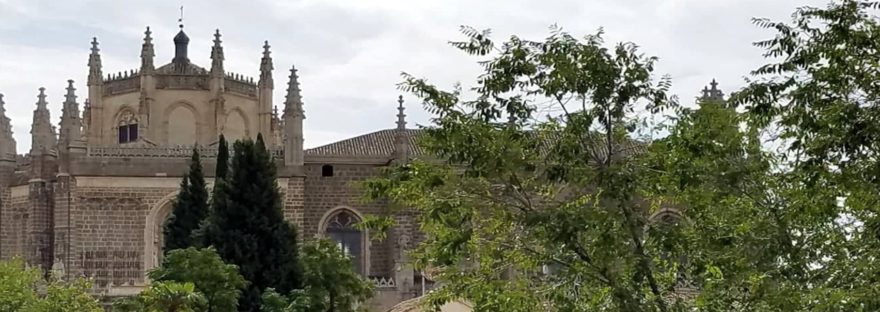
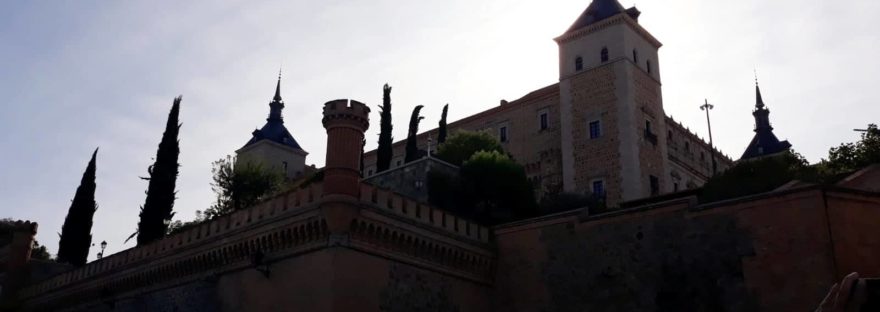

 Located on the “Plaza de Oriente” and facing towards the Royal Palace in Madrid, Spain, one finds the Royal Theater. This structure, which was eventually converted into the Opera House, was built in the 19th century in the style of neoclassicism and eclecticism. Structural problems forced its closure between the years 1925 to 1966.
Located on the “Plaza de Oriente” and facing towards the Royal Palace in Madrid, Spain, one finds the Royal Theater. This structure, which was eventually converted into the Opera House, was built in the 19th century in the style of neoclassicism and eclecticism. Structural problems forced its closure between the years 1925 to 1966. 



 On the site of the land where the Palace of the Marquis de Villena stood and in the heart of the Jewish Quarter is the “Mirador del Paseo del Transit” Park in Toledo, Spain. This park was opened in 1865.
On the site of the land where the Palace of the Marquis de Villena stood and in the heart of the Jewish Quarter is the “Mirador del Paseo del Transit” Park in Toledo, Spain. This park was opened in 1865. 